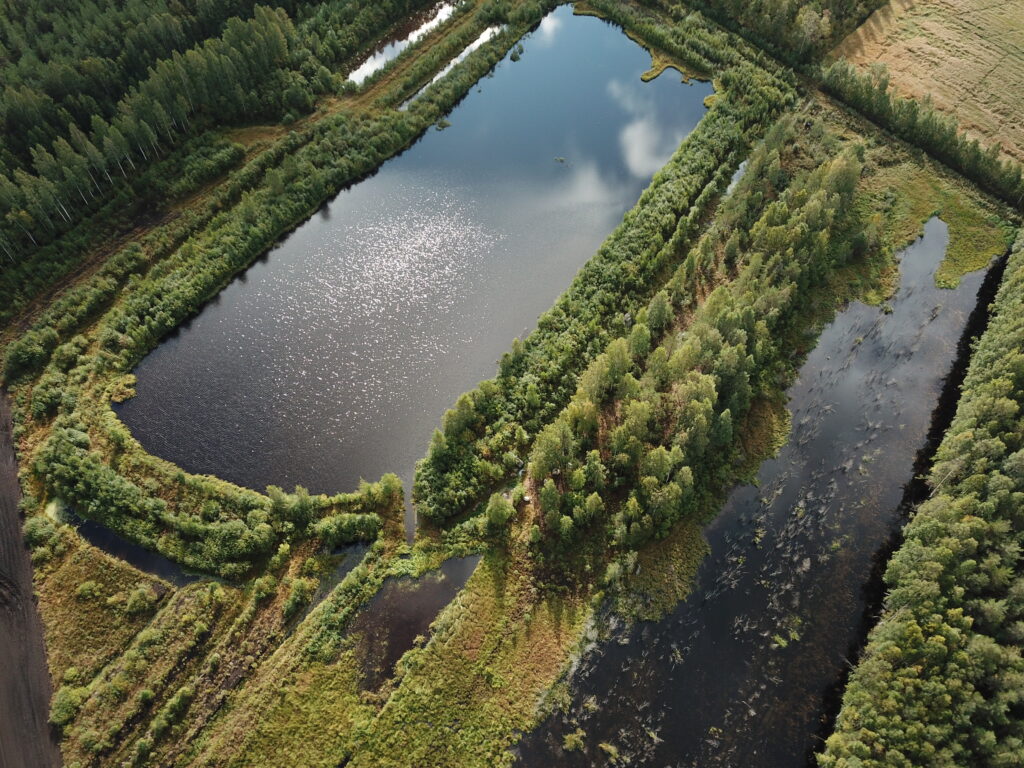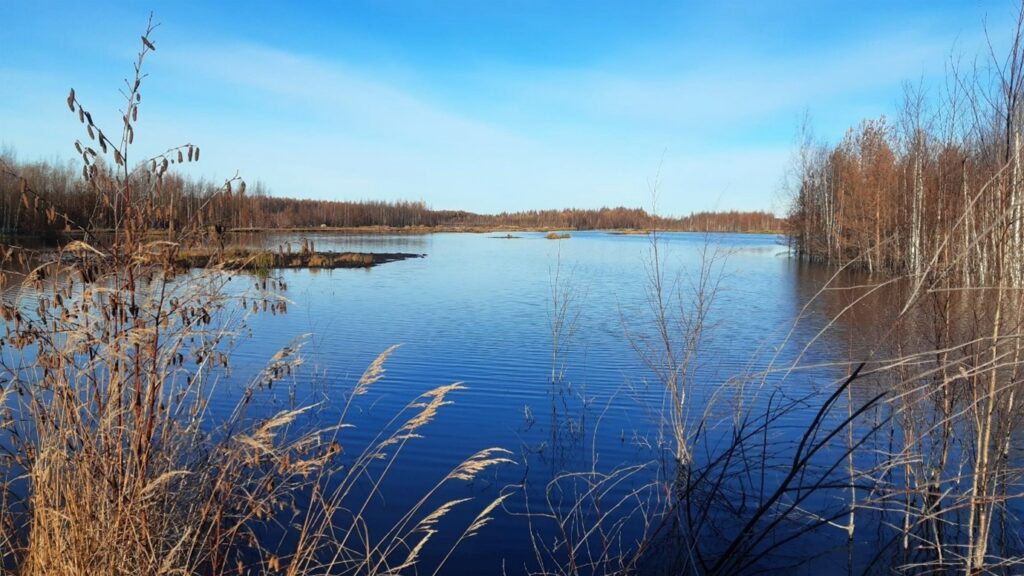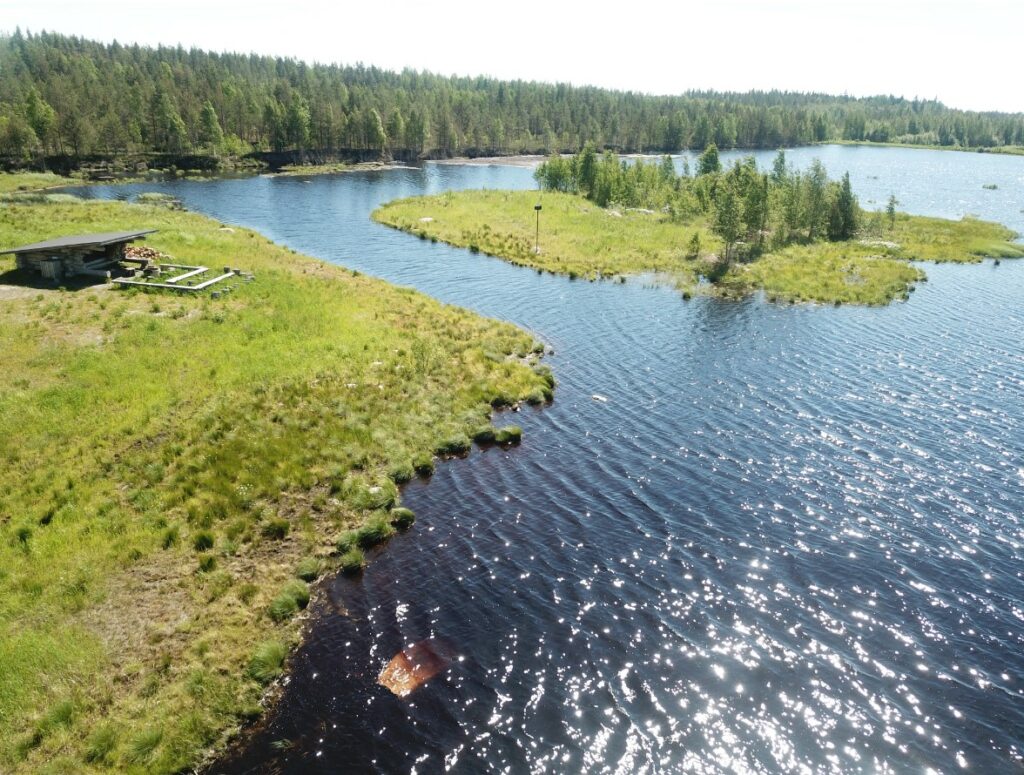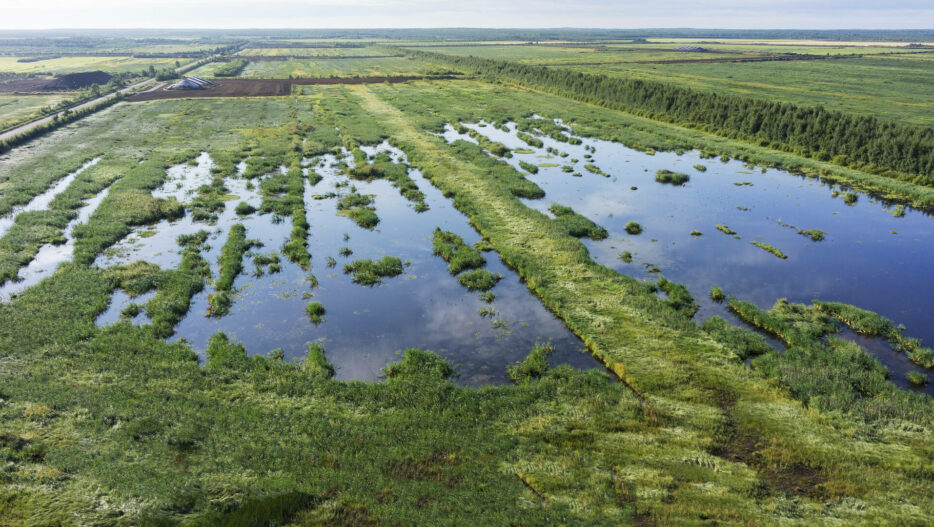The planet is threatened by both climate change and habitat loss. For this reason, the importance of wetlands in protecting biodiversity has increased.
One target in Neova’s environment strategy is to safeguard biodiversity. To implement the strategy, we have already created almost 3,500 hectares of wetlands across Finland in recent years. The vast majority of these are created on or adjacent to former peat production areas.
The design and implementation of wetlands has taken into account their impact on water protection, biodiversity, and recreational and landscape values. Some wetlands have bird towers, lean-to shelters, fire pits, and parking areas.
Wetlands such as bird lakes are rich habitats, where many birds and other species find suitable places to live. Wetlands can serve as important local or even regional bird-watching areas and hunting ranges.
Wetlands to combat eutrophication of watercourses
Wetlands can improve the condition of watercourses by reducing the amount of nutrients leaching into the water. In addition, wetlands can be used to treat leachate from other land uses, reducing the nutrient and solids load on watercourses. Some of the wetlands created by Neova also treat water from surrounding land and other land uses. The creation of wetlands can therefore have a very significant impact on the status of nearby lakes.
Improving the condition of lakes will reduce the eutrophication of the Baltic Sea, as large amounts of nutrients run off into the sea from inland. A functioning wetland can retain up to 90% of the soil and nutrients carried by water.
Wetlands are effective in aligning discharges. They act as water reservoirs during dry periods and control flooding after heavy rains. This will become increasingly important in the future, as climate change is predicted to increase the frequency of both heavy rainfall and droughts.

More wetlands
In the coming years, areas will be withdrawn from peat production at an accelerating rate as demand for energy peat declines. In line with Neova’s environment strategy, land use in areas no longer used for peat production will focus on promoting biodiversity. The choice of the next land use is influenced by a number of factors, such as the thickness of the residual peat, the rockiness and hydrology of the area, the regional location and position on the map of Finland, the soil, and the topography.
Neova’s wetlands are located in different parts of Finland.


